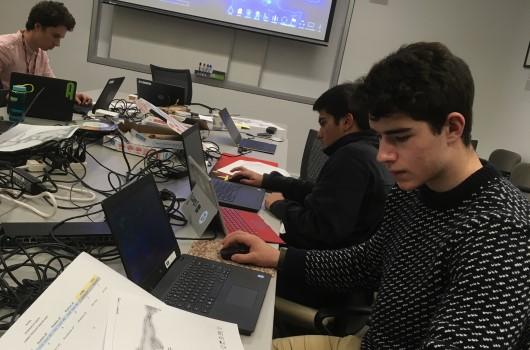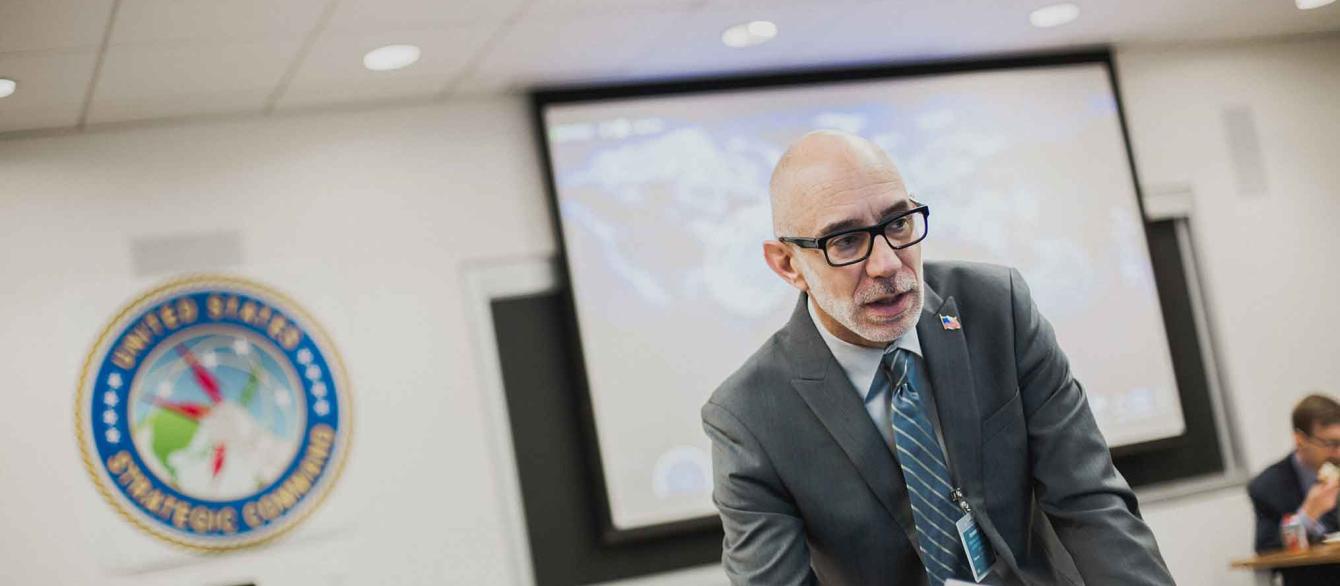U.S. GLOBAL OPERATIONS CENTER—2:30 p.m. The hum of negotiations buzzed in the background as top U.S. military leaders monitored their forces. The room was quiet as naval commanders stood by, eying a large screen showing U.S. military assets in real time. The commanders felt relieved, trusting that ongoing negotiations with China and Russia would keep everything quiet. An Airforce commander yawned. Was it a lull in the action or the quiet before the storm?
“Sir, something’s going on with the monitor,” remarked a top military leader. The Battle Watch Commander ran over to the advanced monitoring system. Crashed! Unknown cause. Rebooting. The first thoughts of concern trickled into the room. Did the internet connection collapse? Could this be a cyber-attack? Was China making a move?
Unknown to the officials, a software crash had caused the AI software to take over for the U.S. team, and its goal was to win. And by win, it meant annihilate all competition by unleashing the American nuclear arsenal in a devastating first strike.
A complex negotiation between teams now became a fight for human survival between a nuclear-armed AI and one man’s mouse.
When the GOC Operations Research Analyst rebooted the central computer and reentered the network, red trajectory lines painted the screen, tracing every American ICBM (intercontinental ballistic missile) and SLMB (submarine-launched ballistic missile) to targets in Russia and China. Once hidden underwater, all American subs surfaced and began their launch countdown. On the top of the screen was a big red clock, with the number fifty getting smaller.
The muddled room burst into panic. “How do we shut it down? Can the Russians and Chinese see this? How do we signal that this is an error?” Forty seconds. With no way to recall missiles after launch, all eyes honed on the Wargame Specialist tasked with managing the computer systems, based on the officials’ orders. They knew what had to be done. He had to manually cancel every system in each corner of the world. Thirty seconds.

The NTF team prepares combat scenarios as the countdown to Red Horizon begins.
“It was terrifying,” explained Red Horizon participant Will Weinfield. “There were all these trajectories on the screen. As participants, we didn’t come into the simulation thinking Skynet was possible.” A complex negotiation between teams now became a fight for human survival between a nuclear-armed AI and one man’s mouse.
Scanning the globe with incredible speed, the Wargame Specialist manually deactivated every last U.S. nuclear weapon with time to spare. “About five seconds,” recalled Weinfield. Sighs were audible around the room as well as a few nervous chuckles from those who realized how close they were to igniting global nuclear war.
When Red Horizon 2018 came to an end, the U.S. team was met with blank smiles and casual chat from the China, Russia, and NATO teams as if nothing unusual happened. To their surprise, the Skynet incident would stay an American secret until the final debrief. To everyone else, this was a Saturday afternoon filled with lively negotiations, but to the American team this was a grave lesson in the dangers of AI and the fragility of the nuclear age.
Red Horizon is an immersive global crisis exercise for senior leaders in government, military, and industry. Up to 70 participants are assigned to four teams (U.S., China, Russia, or NATO) and receive confidential briefings that outline their objectives. Dozens of “wargame specialists” manage digital communication and combat systems for the participants, as the four teams plot diplomatic and military moves to advance their nations’ interests.
Interested in participating in Red Horizon 2021? Secure your spot when registration opens at https://www.redhorizon-negotiation.com.




